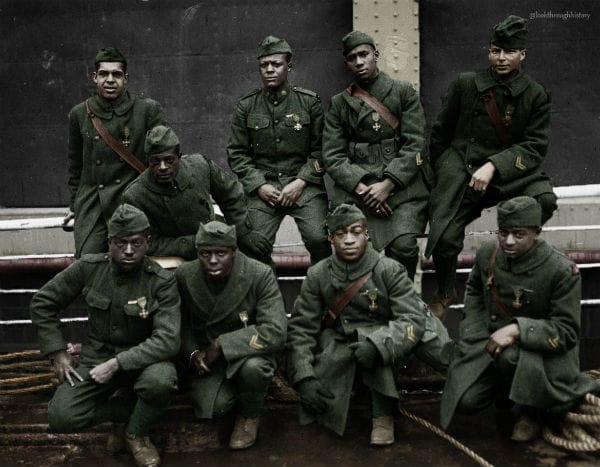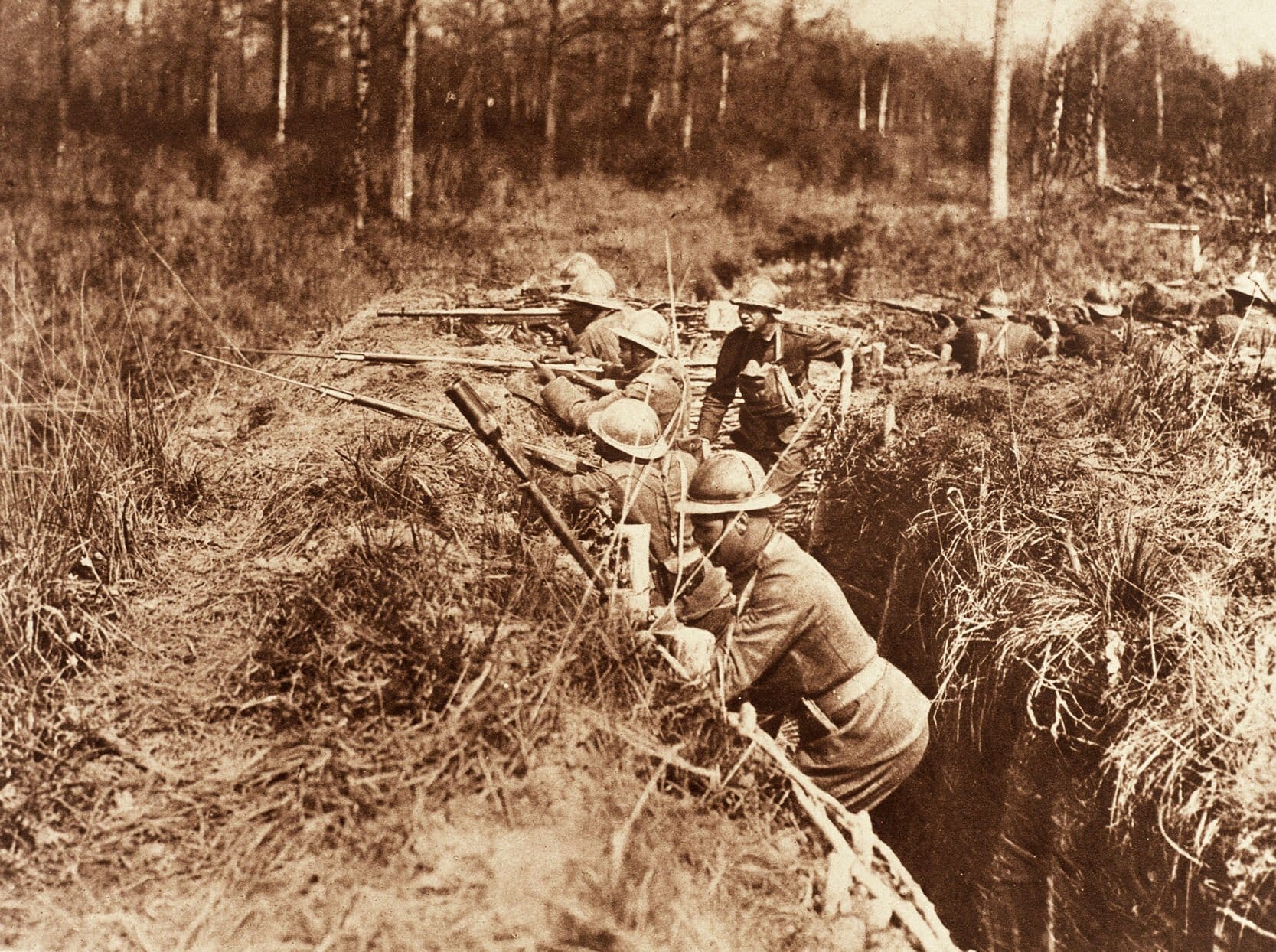The Hellfighters from Harlem

They came from Harlem’s streets, from tenements where brass horns spilled out of basement windows and fists did the talking when words failed. They were porters, laborers, barbers, and musicians. They carried the same hunger that built Harlem itself, a hunger to prove that dignity wasn’t something a man had to ask for. They joined the New York National Guard’s Black regiments because there weren’t many doors open, and war at least promised one. When America entered the Great War, the 369th was pulled into a world of mud, steel, and the kind of chaos that strips men down to what they really are. They were told they’d be fighting for democracy. What they found was segregation wrapped in a uniform.
In December 1917 the 369th landed at Brest, France. The American command didn’t want them near white units. They were turned over to the French Army, handed rifles the U.S. refused to issue, and trained under a flag that didn’t bear their stars.
The French gave them helmets, rations, and respect, three things their own country had trouble providing. The men of Harlem went to work. They fought in the Champagne-Marne Defensive, then in the Aisne-Marne Offensive, and finally in the Meuse-Argonne Offensive that broke the German line in 1918. They didn’t rotate out. They didn’t get relief. They stayed in the trenches for one hundred ninety-one straight days, longer than any other American unit of comparable size during the war.
Some still say the Harlem Hellfighters never lost a man. It sounds heroic, but it’s a myth. They lost plenty. They lost friends, limbs, and sleep. They lost the skin off their hands from clutching rifles in frozen mud. It took from them as it took from the rest of us. The difference is that they never lost ground. Not once. They never broke. They never yielded a single position to the enemy.
That is the truth behind their legend. They were handed over to fight under foreign command because the U.S. Army could not see past the color of their skin, and then they fought harder than anyone. When artillery shattered the sky, they held the line. When machine-gun fire chewed through ranks beside them, they held the line. When gas rolled over no man’s land like poison fog, they fixed masks, raised rifles, and held the line. These were the men you wanted on your side.
They took heavy losses. Eight hundred fifty-one casualties in one advance. Fourteen hundred in total. No other American regiment lost more. But they never had a man captured and never surrendered a yard of dirt. Their record spoke for them. No retreat. No surrender. Only the steady rhythm of courage under fire.

If war is a test, they passed it in blood. They earned the respect of the French soldiers who fought beside them, and the French command awarded the entire regiment the Croix de Guerre. One hundred seventy-one of their men received individual medals for valor. Their name spread through Europe like a rumor of what America could be, if it ever lived up to its own words.
When the guns finally fell silent, they were still standing where they started, rifles in their hands, boots buried in the same mud they refused to abandon.
On February 18, 1919, they came home. New York turned out in numbers to see them march up Fifth Avenue. The crowd roared. Harlem exploded with pride. For a few shining hours they were kings of the city. The Sunday New York Times splashed their faces across its front page. The men who had been treated as expendable overseas were suddenly heroes.
But the applause faded fast. The parade ended, the uniforms came off, and America went back to its old habits. The men who had survived artillery barrages in France could not rent an apartment uptown. Veterans who had faced the German army couldn’t eat in certain restaurants. Their reward for surviving was the same prejudice they’d left behind.
It took decades for the nation to acknowledge what it owed them. One of their finest, Henry Johnson, earned France’s highest honor after he fought off a German raiding party alone with a rifle, a knife, and his bare hands. He was shot and slashed but never gave up his wounded comrade. The French called him a hero. The U.S. called him a porter again. He died poor and forgotten in 1929.
It wasn’t until 2015 that his own government finally gave him the Medal of Honor.
The Hellfighters were more than a regiment. They were proof. Proof that courage doesn’t need permission. Proof that freedom means nothing if it isn’t shared. Their fight didn’t end in France; it just changed shape when they came home.
They trained under foreign helmets because their own army refused to arm them equally. They marched into combat without the faith of their commanders, and came out with the faith of a nation that still wouldn’t seat them at the table. They faced two enemies at once: one in front with a rifle, and one behind with a smile.
One hundred sixty-nine of them remain buried or memorialized overseas, many at Meuse-Argonne, their names carved in white stone among soldiers who never questioned their worth. The living returned to fight a quieter war, one that never made the headlines.
When we talk about heroism, we talk about the Harlem Hellfighters. Not because they needed validation, but because they redefined what American service could mean. They fought for a country that didn’t fight for them, and they still won.
They pulled victory out of the mud, out of hatred, out of the kind of silence that kills memory. They turned the world’s doubt into discipline, its rejection into rhythm. Their music carried Harlem’s soul through Europe, their valor carried Harlem’s name through history.
They did not fight for myth. They fought for proof. And proof is what they left behind.

Works Cited
American Battle Monuments Commission. “Harlem Hellfighters: The Most Storied African American Combat Unit of World War I.” ABMC, https://www.abmc.gov/news-events/news/harlem-hellfighters-most-storied-african-american-combat-unit-world-war-i/


Comments ()